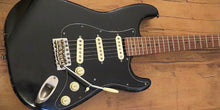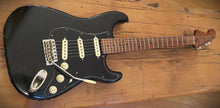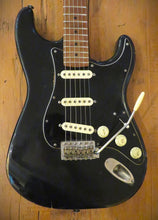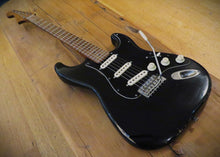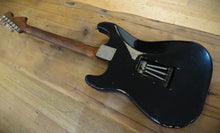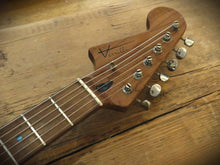
The reverse headstock neck has a roasted maple back and roasted maple board. Most builders agree a board on maple back is more stable than a one piece neck (also possibly less chance of dead spots than a one piece neck). If you ever owned or played a reverse headstock, two things should become noticeable; both the feel and the tone. A lot more resonance and tension on the lower strings and some notice the higher plain strings a bit easier to bend. (It can be useful to experiment with some mixed-matched string gauges depending on your playing style.) Aside from the purpose of roasting wood to make it dryer and help with stability, Frank finds they do tend to sound livelier, plus there is the advantage of the board not needing to be sprayed with lacquer or poly, thereby making it more comfortable for a lot of players (ie EVH). Also, the benefit of the natural darker color roasting produces prevents it from getting too much of an irregular dirty look.
- Body: light weight swamp ash
- Neck: roasted maple back and board
- Radius: 12"
- Fret size: medium jumbo
- Neck angle: reverse
- Nut: bone, 1 11/16"
- Neck contour: slightly chunky round back, heavy rolled edges
- Finish: black, nitro, medium aging
- Pickups: Lollar blondes and special S in bridge
- Weight: 7 lbs, 2 oz







